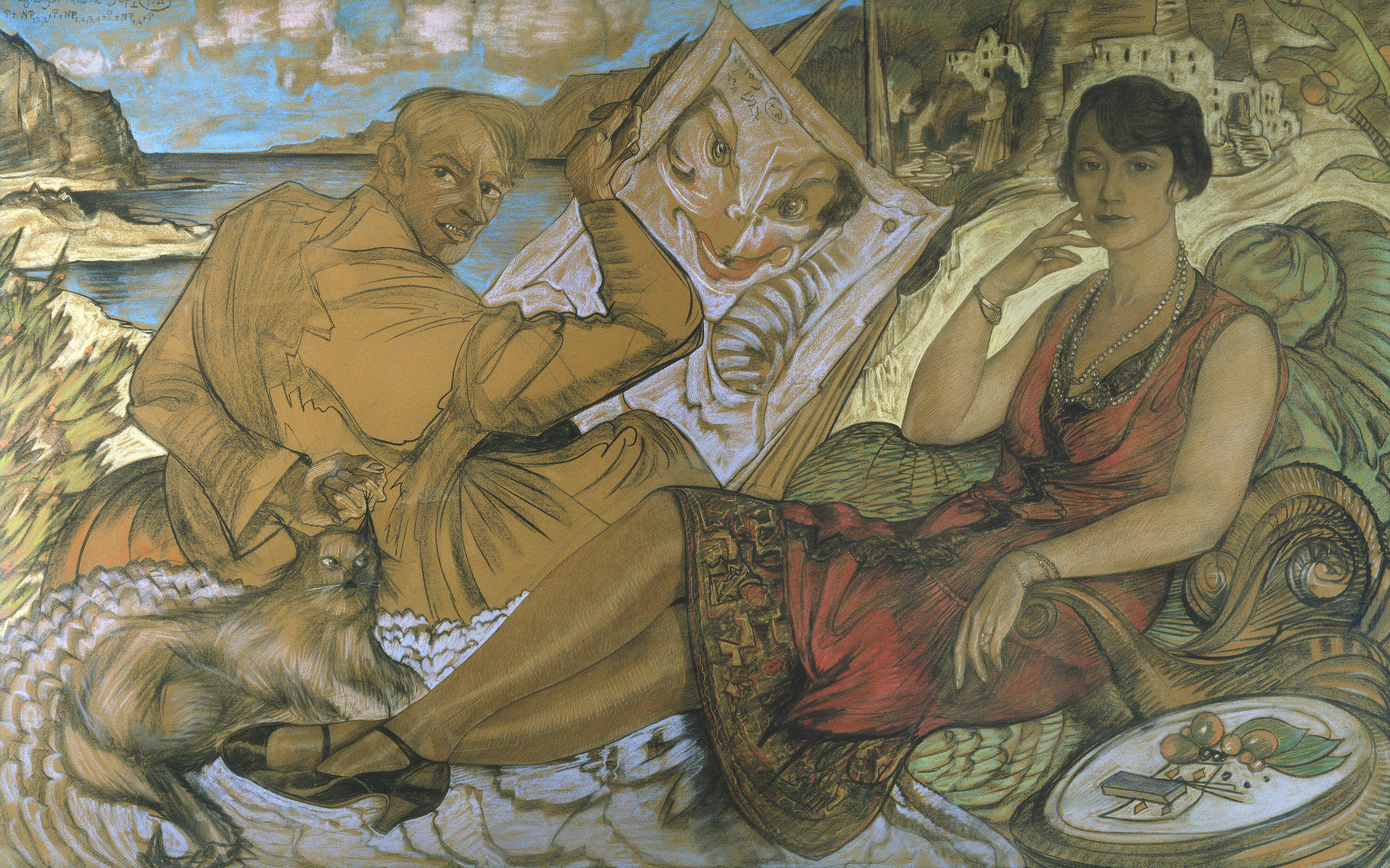|
Lying
A lie is an assertion that is believed to be false, typically used with the purpose of deception, deceiving or misleading someone. The practice of communicating lies is called lying. A person who communicates a lie may be termed a liar. Lies can be interpreted as deliberately false statements or misleading statements, though not all figurative language, statements that are literally false are considered lies – metaphors, hyperboles, and other figurative rhetoric are not intended to mislead, while lies are explicitly meant for literal interpretation by their audience. Lies may also serve a variety of instrumental, interpersonal, or psychological functions for the individuals who use them. Generally, the term "lie" carries a negative connotation, and depending on the context a person who communicates a lie may be subject to social, legal, religious, or criminal sanctions; for instance, perjury, or the act of lying under oath, can result in criminal and civil charges being pres ... [...More Info...] [...Related Items...] OR: [Wikipedia] [Google] [Baidu] |
Deception
Deception is the act of convincing of one or many recipients of untrue information. The person creating the deception knows it to be false while the receiver of the information does not. It is often done for personal gain or advantage. Tort of deceit, Deceit and dishonesty can also form grounds for civil litigation in tort, or contract law (where it is known as misrepresentation or fraudulent misrepresentation if deliberate), or give rise to criminal prosecution for fraud. Types Communication The Interpersonal deception theory, Interpersonal Deception Theory explores the interrelation between communicative context and sender and receiver cognitions and behaviors in deceptive exchanges. Some forms of deception include: * Lies: making up information or giving information that is the opposite or very different from the truth. * Equivocations: making an indirect, ambiguous, or contradictory statement. * Lying by omission, Concealments: omitting information that is important o ... [...More Info...] [...Related Items...] OR: [Wikipedia] [Google] [Baidu] |
Big Lie
A big lie () is a gross distortion or misrepresentation of the truth primarily used as a political propaganda technique. The German expression was first used by Adolf Hitler in his book ''Mein Kampf'' (1925) to describe how people could be induced to believe so colossal a lie because they would not believe that someone "could have the impudence to distort the truth so infamously". Hitler claimed that the technique had been used by Jews to blame Germany's loss in on German general Erich Ludendorff, who was a prominent nationalist political leader in the Weimar Republic. According to historian Jeffrey Herf, the Nazis used the idea of the original big lie to turn sentiment against Jews and justify the Holocaust. Herf maintains that Nazi Germany's chief propagandist Joseph Goebbels and the Nazi Party actually used the big lie technique that they describedand that they used it to turn long-standing antisemitism in Europe into mass murder. Herf further argues that the Nazis' bi ... [...More Info...] [...Related Items...] OR: [Wikipedia] [Google] [Baidu] |
Perjury
Perjury (also known as forswearing) is the intentional act of swearing a false oath or falsifying an affirmation to tell the truth, whether spoken or in writing, concerning matters material to an official proceeding."Perjury The act or an instance of a person’s deliberately making material false or misleading statements while under oath. – Also termed false swearing; false oath; (archaically forswearing." Like most other crimes in the common law system, to be convicted of perjury one must have had the ''intention'' (''mens rea'') to commit the act and have ''actually committed'' the act (''actus reus''). Further, statements that ''are facts'' cannot be considered perjury, even if they might arguably constitute an omission, and it is not perjury to lie about matters that are immaterial to the legal proceeding. Statements that entail an ''interpretation'' of fact are not perjury because people often draw inaccurate conclusions unwittingly or make honest mistakes without the ... [...More Info...] [...Related Items...] OR: [Wikipedia] [Google] [Baidu] |
On Bullshit
''On Bullshit'' is a 1986 essay and 2005 book by the American philosopher Harry G. Frankfurt which presents a theory of bullshit that defines the concept and analyzes the applications of bullshit in the context of communication. Frankfurt determines that bullshit is speech intended to persuade without regard for truth. The liar cares about the truth and attempts to hide it; the bullshitter doesn't care whether what they say is true or false.''On Bullshit'' (2005), by Harry Frankfurt. p. 61. Frankfurt's philosophical analysis of bullshit has been analyzed, criticized and adopted by academics since its publication. History Frankfurt originally published the essay "On Bullshit" in the '' Raritan Quarterly Review'' in 1986. Nineteen years later, it was published as the book ''On Bullshit'' (2005), which proved popular among lay readers; the book appeared for 27 weeks on ''The New York Times'' Best Seller list and was discussed on the television show '' The Daily Show Wit ... [...More Info...] [...Related Items...] OR: [Wikipedia] [Google] [Baidu] |
Pinocchio
Pinocchio ( , ) is a fictional character and the protagonist of the children's novel, ''The Adventures of Pinocchio'' (1883) by Italian writer Carlo Collodi of Florence, Tuscany. Pinocchio was carved by a poor man named Geppetto in a Tuscan village. He is created as a wooden puppet, but he dreams of becoming a real boy. He is known for his long nose, which grows when he lies. Pinocchio is a cultural icon and one of the most reimagined characters in children's literature. His story has been adapted into many other media, notably the 1940 Disney film ''Pinocchio (1940 film), Pinocchio''. Collodi often used the Italian Tuscan dialect in his book. The name ''wikt:Pinocchio, Pinocchio'' is possibly derived from the rare Tuscan form ''wikt:pinocchio#Italian, pinocchio'' ('pine nut') or constructed from ''wikt:pino#Italian, pino'' ('pine tree, pine wood') and ''wiktionary:occhio, occhio'' ('eye'). Fictional character description Pinocchio's characterization varies across interpre ... [...More Info...] [...Related Items...] OR: [Wikipedia] [Google] [Baidu] |
Fake News
Fake news or information disorder is false or misleading information (misinformation, disinformation, propaganda, and hoaxes) claiming the aesthetics and legitimacy of news. Fake news often has the aim of damaging the reputation of a person or entity,Schlesinger, Robert (April 14, 2017)"Fake news in reality" '' U.S. News & World Report''. or making money through advertising revenue. Although false news has always been spread throughout history, the term ''fake news'' was first used in the 1890s when sensational reports in newspapers were common. Nevertheless, the term does not have a fixed definition and has been applied broadly to any type of false information presented as news. It has also been used by high-profile people to apply to any news unfavorable to them. Further, disinformation involves spreading false information with harmful intent and is sometimes generated and propagated by hostile foreign actors, particularly during elections. In some definitions, fake news i ... [...More Info...] [...Related Items...] OR: [Wikipedia] [Google] [Baidu] |
Fraud
In law, fraud is intent (law), intentional deception to deprive a victim of a legal right or to gain from a victim unlawfully or unfairly. Fraud can violate Civil law (common law), civil law (e.g., a fraud victim may sue the fraud perpetrator to avoid the fraud or recover monetary compensation) or criminal law (e.g., a fraud perpetrator may be prosecuted and imprisoned by governmental authorities), or it may cause no loss of money, property, or legal right but still be an element of another civil or criminal wrong. The purpose of fraud may be monetary gain or other benefits, such as obtaining a passport, travel document, or driver's licence. In cases of mortgage fraud, the perpetrator may attempt to qualify for a mortgage by way of false statements. Terminology Fraud can be defined as either a civil wrong or a criminal act. For civil fraud, a government agency or person or entity harmed by fraud may bring litigation to stop the fraud, seek monetary damages, or both. For cr ... [...More Info...] [...Related Items...] OR: [Wikipedia] [Google] [Baidu] |
Defamation
Defamation is a communication that injures a third party's reputation and causes a legally redressable injury. The precise legal definition of defamation varies from country to country. It is not necessarily restricted to making assertions that are falsifiable, and can extend to concepts that are more abstract than reputationlike dignity and honour. In the English-speaking world, the law of defamation traditionally distinguishes between libel (written, printed, posted online, published in mass media) and slander (oral speech). It is treated as a civil wrong (tort, delict), as a criminal offence, or both. Defamation and related laws can encompass a variety of acts (from general defamation and insultas applicable to every citizen – to specialized provisions covering specific entities and social structures): * Defamation against a legal person in general * Insult against a legal person in general * Acts against public officials * Acts against state instituti ... [...More Info...] [...Related Items...] OR: [Wikipedia] [Google] [Baidu] |
Hoax
A hoax (plural: hoaxes) is a widely publicised falsehood created to deceive its audience with false and often astonishing information, with the either malicious or humorous intent of causing shock and interest in as many people as possible. Some hoaxers intend to eventually unmask their representations as having been a hoax so as to expose their victims as fools; seeking some form of profit, other hoaxers hope to maintain the hoax indefinitely, so that it is only when skeptical people willing to investigate their claims publish their findings, that the hoaxers are finally revealed as such. History Zhang Yingyu's '' The Book of Swindles'' ( 1617), published during the late Ming dynasty, is said to be China's first collection of stories about fraud, swindles, hoaxes, and other forms of deception. Although practical jokes have likely existed for thousands of years, one of the earliest recorded hoaxes in Western history was the drummer of Tedworth in 1661. The communication of ... [...More Info...] [...Related Items...] OR: [Wikipedia] [Google] [Baidu] |
Disinformation
Disinformation is misleading content deliberately spread to deceive people, or to secure economic or political gain and which may cause public harm. Disinformation is an orchestrated adversarial activity in which actors employ strategic deceptions and media manipulation tactics to advance political, military, or commercial goals. Disinformation is implemented through coordinated campaigns that "weaponize multiple rhetorical strategies and forms of knowing—including not only falsehoods but also truths, half-truths, and value judgements—to exploit and amplify culture wars and other identity-driven controversies." In contrast, ''misinformation'' refers to inaccuracies that stem from inadvertent error. Misinformation can be used to create disinformation when known misinformation is purposefully and intentionally disseminated. " Fake news" has sometimes been categorized as a type of disinformation, but scholars have advised not using these two terms interchangeably or us ... [...More Info...] [...Related Items...] OR: [Wikipedia] [Google] [Baidu] |
April Fools' Day
April Fools' Day or April Fool's Day (rarely called All Fools' Day) is an annual custom on the 1st of April consisting of practical jokes, hoaxes, and pranks. Jokesters often expose their actions by shouting "April Fool[s]!" at the recipient. Mass media can be involved with these pranks, which may be revealed as such the following day. The custom of setting aside a day for playing harmless pranks upon one's neighbor has been relatively common in the world historically. Origins Although many theories have been proposed throughout the years, the origin of April Fools' Day is not exactly known. A disputed association between 1 April and foolishness is in Geoffrey Chaucer's ''The Canterbury Tales'' (1392). In the "Nun's Priest's Tale", a vain cock, Chauntecleer, is tricked by a fox "Since March began, full thirty days and two," i.e. the 32nd day from 1 March, which is 1 April. However, it is not clear that Chaucer was referencing 1 April since the text of the "Nun's Priest's Tale" ... [...More Info...] [...Related Items...] OR: [Wikipedia] [Google] [Baidu] |









